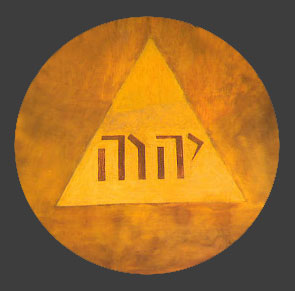Adoration of the Name of God on:
[Wikipedia]
[Google]
[Amazon]
 The ''Adoration of the Name of God'' ( es, Adoración del nombre de Dios) or ''The Glory'' ( es, La gloria) (1772) is a fresco painted by
The ''Adoration of the Name of God'' ( es, Adoración del nombre de Dios) or ''The Glory'' ( es, La gloria) (1772) is a fresco painted by
Universidad de Zaragoza: catalogue of Goya's works
* {{DEFAULTSORT:Adoration Of The Name Of God Paintings by Francisco Goya Fresco paintings in Spain Catholic paintings 1770s paintings History of Zaragoza 1772 paintings Paintings in Zaragoza
 The ''Adoration of the Name of God'' ( es, Adoración del nombre de Dios) or ''The Glory'' ( es, La gloria) (1772) is a fresco painted by
The ''Adoration of the Name of God'' ( es, Adoración del nombre de Dios) or ''The Glory'' ( es, La gloria) (1772) is a fresco painted by Francisco Goya
Francisco José de Goya y Lucientes (; ; 30 March 174616 April 1828) was a Spanish romantic painter and printmaker. He is considered the most important Spanish artist of the late 18th and early 19th centuries. His paintings, drawings, and e ...
on the ceiling of the cupola over the Small Choir of the Virgin in the Basílica de Nuestra Señora del Pilar
:''See Basilica of Our Lady of the Pillar (Buenos Aires) for the church in Buenos Aires''
The Cathedral-Basilica of Our Lady of the Pillar ( es, Catedral-Basílica de Nuestra Señora del Pilar) is a Roman Catholic church in the city of Zaragoza ...
in Zaragoza
Zaragoza, also known in English as Saragossa,''Encyclopædia Britannica'"Zaragoza (conventional Saragossa)" is the capital city of the Zaragoza Province and of the autonomous community of Aragon, Spain. It lies by the Ebro river and its tributari ...
.
History
After returning from travelling in Italy to develop his knowledge in 1771, Goya received the commission to decorate the vault over the small choir of the Basílica del Pilar in Zaragoza, with a painting on the adoration of the name of God, in the execution of which he amply demonstrated his mastery of the techniques of fresco painting, although his remuneration was less than that of the other artists working on the ceilings of the basilica: Goya received 15,000 reales in comparison with the 25,000 paid to, for example, Antonio González Velázquez.Description
The work in its final execution displays the stereotypes of Late Baroque Catholic religious painting. To either side are arranged groups of angels directing the attention to the central scene, dominated by the symbol of the ChristianTrinity
The Christian doctrine of the Trinity (, from 'threefold') is the central dogma concerning the nature of God in most Christian churches, which defines one God existing in three coequal, coeternal, consubstantial divine persons: God th ...
and Godhead: an equilateral triangle inscribed with the Tetragrammaton
The Tetragrammaton (; ), or Tetragram, is the four-letter Hebrew theonym (transliterated as YHWH), the name of God in the Hebrew Bible. The four letters, written and read from right to left (in Hebrew), are ''yodh'', '' he'', '' waw'', and ...
in Hebrew
Hebrew (; ; ) is a Northwest Semitic language of the Afroasiatic language family. Historically, it is one of the spoken languages of the Israelites and their longest-surviving descendants, the Jews and Samaritans. It was largely preserved ...
. Because the various groups are situated at different altitudes, the final impression is rather static, dominated by a composition in the shape of an "X", the result of Goya's intention to have the lines of force coming in from the corners and crossing in the centre.
Various sketches and preparatory drawings for the work have been preserved which display more accomplishment than the painting on the cupola shows in actuality, although it must be borne in mind that the fresco has been restored no less than four times, in 1887, 1947, 1967 and 1991. In them Goya planned a composition of great contrast in the colouring and the illumination, and with a considerably greater dynamism in the movement than is visible in the finished product.
See also
* Name of God in Christianity *List of works by Francisco Goya
The following is an incomplete list of works by the Spanish painter and printmaker Francisco Goya.
Paintings (1763–1774)
Paintings (1775–1792)
''see also: List of Francisco Goya's tapestry cartoons''
Paintings (1793–1807)
Paintings (1 ...
References
*Bozal, Valeriano, ''Francisco Goya, vida y obra, 1 vol.'', Madrid, Tf., 2005, págs. 30–31. .External links
Universidad de Zaragoza: catalogue of Goya's works
* {{DEFAULTSORT:Adoration Of The Name Of God Paintings by Francisco Goya Fresco paintings in Spain Catholic paintings 1770s paintings History of Zaragoza 1772 paintings Paintings in Zaragoza